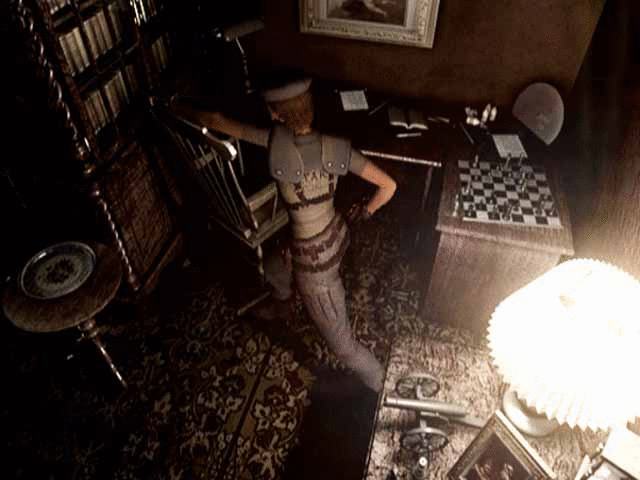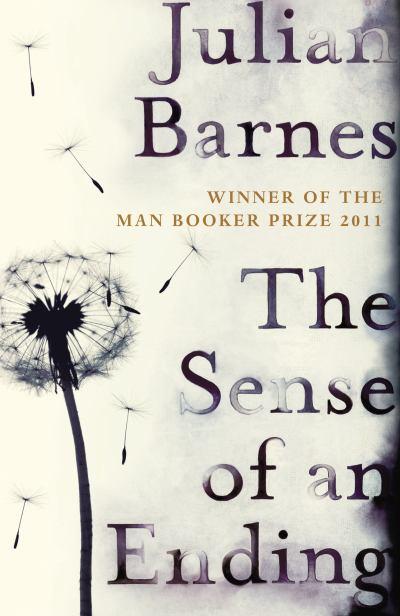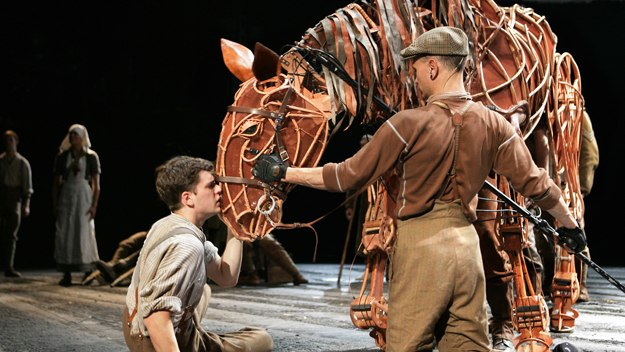To experience it further, you can either watch the Let's Play series here: Let's Play: Dear Esther (Part 1) or download the full game here: Dear Esther on Steam (most Macs or PCs will be able to run it without difficulty).
There's been debate about whether Dear Esther constitutes a videogame or not. I would say it does not. It almost could, but it doesn't. A game has to have some sort of challenge or conflict and some sort of win state, or some objective marker against which achievement can be measured. It also has to have some sort of interaction or, at the least, give the player some agency over the outcome of the story. Dear Esther has none of these things.
The only conflict is within the narrative and concerns the narrator's struggle towards the beacon at the top of the island. There are no branching stories, except that the snippets of monologue are supposedly selected semi-randomly, meaning that subtle variations on the overall narrative can occur over multiple playthroughs depending on what facts are or are not revealed. But that does not make a game: that is a literary device.
The only control the player is given is to walk (not run) forwards, backwards, left, or right, look around, swim up or swim down, zoom in on a particular detail and, in a sort of meta-fiction way, take a screenshot. I say 'meta-fiction' as in taking a screenshot is something that you as a player are doing to have a memento of your journey. It is not referenced within the fiction, nor has any bearing upon it.
Everything you come across on the island is fixed in place: there's no physics engine at play here. Even your avatar's body is nonexistent, with neither weight nor form. You essentially play as a floating camera, observing but never touching the things around you. It strongly gives the impression of walking through a museum or an art exhibit.
Being less than two hours long, it would almost have worked just as well as an art-film. Everything you see, from the desolate abandoned island, battered by wind and waves, to the lonely candles in the darkness, the paper boats floating forlornly across the bay, the strewn, salt-water rusted fragments of a car wreck, the nest containing three eggs deliberately placed in a stone shed, is a visual metaphor for the narrator himself.
Strangely, since you look out through the narrator's eyes, it is a story in which every character is an absent character, talked about but never seen. Now that I have given you some idea of how the story is experienced, I will begin to discuss my opinions on it.
The eponymous Esther is, or was, apparently, the narrator's wife and the mother of his children. This is never directly stated, as nothing ever is in this story, but it is strongly implied. One can be pretty certain she was killed in a car crash on a motorway somewhere between the junction for Sandford and a service station (the narrator mentions driving along the stretch of road afterwards, as if expecting there to be something special or unusual about it to mark what had happened there). A brief glimpse of two wrecked cars submerged within a lake or ocean, both empty and desolate, is given during the narrative's only departure from its Hebridean setting.
There is another character called Paul, whose role is not entirely clear, but I interpreted that he was the driver who caused the accident, supposedly through drunk-driving, and that the narrator later visited him for some unknown reason, and drank coffee with him.
The narrative, both spoken and visual, revisits several themes throughout its course, including (from the Wikipedia article): kidney stones, drunk driving, the conversion of Paul the Apostle, the narrator's infected leg, seagulls, vessels without a bottom, the number 21, and murals of circuit diagrams, molecular graphics and neurons.
It takes a fairly scattershot approach, mixing in all these ideas haphazardly as if that will produce a great story. The lack of concrete conclusions which can be drawn from the vagueness of the narrative suggests that the writer has confused obtuseness with narrative depth, but maybe that's too harsh.
In Alain Robbe-Grillet's 'La Jalousie' (Jealousy) themes, motifs and events are reiterated upon with minor variations, so that what actually happened, ie. whether the narrator's wife ever did have an affair, and how this went, is never clear. The structure of the novel mirror's the obsessively jealous state of the narrator's mind. In a similar way perhaps the fragmented monologues of Dear Esther mirror the narrator's grief at his loss, although if this was the goal, I feel Dear Esther is less successful than La Jalousie.
The writing too could have done with some editing. For a start, the tone is often anachronistic for a presumably present-day narrator (I assume the story takes place in the present day: that was the impression I got, but I can't remember any specific concrete details that meant it could not have been any time as far back as about 1970). For example, there's a line I heard towards the end something along the lines of (and I'm paraphrasing because I don't have to hand) "I suppose we are all victim's of the diseases of our age: Donnely's was tuberculosis; mine is the internal combustion engine and the cheap fermentation of hops." It's rather too self-conscious for someone who is presumably grief stricken, and does not sound natural.
Much of the writing is like this: a little too overwrought, a little too self-consciously literary, a little too archaic. With sharper editing it could have been something special. The lines from the trailer above are a prime example:
"I have begun my voyage in a paper boat without a bottom. I will fly to the moon in it. I've been folded along a crease in time; a weakness in the sheet of life. Now you have settled on the opposite side of the paper to me. I can see your traces in the ink that soaks through the fibre, the pulped vegetation. When we become waterlogged and the cage disintegrates we will intermingle. When this paper aeroplane leaves the cliff edge and carves parallel vapour trails in the dark we will come together."
There's some distinctive imagery in there, but it's almost fighting to come out. Firstly, I'm not quite sure about the second line. It's creating a mixed metaphor: I'm in a boat / I'll fly to the moon in it. Then he starts talking about an aeroplane later on. I think the author should have made a choice between boat or plane, and boat would have been the stronger image. "Now you have settled on the opposite side of the paper to me" is awkward. If I was being ruthless I'd cut out the "sheet of life" bit: it sounds too strained. I'd definitely cut out "the pulped vegetation". It's unnecessary information. Or at the least cut out "the fibre" as you only need one or the other.
I would replace "cage" with "barrier" or perhaps something else, as it's again creating a mixed metaphor. The final line I like in isolation, because it ties into other themes within the story, particularly the parallel lines islanders used to carve into the chalk to warn of plague. But it still creates that problem of the mixed metaphor. If I was writing that monologue, it would read as follows:
"I have begun my voyage in a paper boat without a bottom. It will carry me to the moon. I feel as if I have been folded along a crease in time. Across the page I can see your traces in the ink that soaks through. When the boat becomes waterlogged we will intermingle and our bodies will carve parallel lines in the surf until we come together."That's still not perfect, but it avoids the use of mixed metaphors. I think that image of two people on opposite sides of a page that is slowly disintegrating, and of them being aware of each other by the ink which soaks through is inspired. There are other such images in the story, but I feel they become suffocated by too much description.
And yet despite all the description, I never got a sense of who Esther was. Nor, for the matter, does much come across about the narrator. Some things can be inferred about him, from the scientific designs he daubed in glowing paint across the island, but not much.
So, in effect, it is a 'game' without any interaction or goal, and a story without any definite action or characterisation. Again, perhaps I feel I'm being harsh. Dear Esther was interesting, I recommend giving it a go, it's cheap price and short length working in its favour here, but I was ultimately disappointed to it. Before I launch into another criticism I will concede one at least partially positive point:
The fact that it, as a piece of interactive art made by a game developer, distributed by a game distributor, merits literary discussion is in its favour. Games which merit discussion for the quality of their writing or the weight of their themes are few and far between. Those that do so outside of genre-fiction are even rarer.
Broadly speaking narrative videogames (ie. those with an explicit story, so not including simulation, strategy, sports, that kind of thing) tend to fall within one of about five genres: fantasy, SF, adventure, military (including spy stories) or what I'll call 'urban killing' which includes gam series such as Hitman, Assassin's Creed, Grand Theft Auto, etc. This is a massive generalisation and there are many exceptions to this, but I feel these genres cover at least 80% of narrative videogames.
Dear Esther is non-violent. It's conflict happens within the narrative and within the narrator, without being externalised. Unfortunately, that is what robs the work of any interaction. Dear Esther tells a story which does not translate easily into videogame mechanics. At best it could have tacked on arbitrary puzzles to unlock the monologues. But at least it is an almost-game, and at least it's not within a traditional game genre, and at least its writing merits discussion.
Now onto my next criticism, which is maybe the most subjective yet. -SPOILER ALERT-, by the way: I'm going to discuss details of the ending in a minute.
What I could not understand was why my player-avatar* is wandering the island. I assume that I am playing the role of the narrator, looking out through the narrator's eyes. If that is the case, then at what point am I doing this? For example, you find empty cans of glow-in-the-dark paint lying around and murals painted with the same and the narrator says something to the effect of "I painted the walls". But when? Is it implying that, assuming you are controlling the narrator, he painted the walls, made his 'shrines' around the island all the way up to the beacon, turned around, went back to where he started, and then started again, following the same path.
Does it imply that perhaps the narrator is a ghost, doomed forever to retrace his steps across the island, seeing everything as he had left it, including the candles which never burn down? The fact that you cannot see your own body, nor kick over any loose objects could be evidence of this, but is just as likely a hangover from the Source engine in which the game is built: something the developer did not think to change as it is just an accepted practice for PC first-person games.
The way I initially interpreted it, which I would have really liked, is that you are playing as the ghost of Esther, but are meant to think initially you are playing as the narrator. That would have been so brilliant, and I was so disappointed this wasn't the case, because it would have made sense. Here's why:
The narrator wrote all these letters to the deceased Esther. This is what the monologues are: his letters to Esther. Since she could never read them, he folded them into an armada of paper boats and sent them out into the sea. Now Esther, as a ghost, may have been drawn to island by this armada, this island having some significance for her and the narrator as it is implied they spent a holiday together there. It would make sense that, as she wandered over the places the narrator talks about in his letters, she would be reminded of their contents and hear them in his voice.
Adding credence to this is that you can occasionally spot a shadowy figure that you can never reach off in the distance. I assumed this to be narrator leading Esther to the beacon. Since you never reach the figure, it is never explained who he or she is. Possibly just an illusion brought on by the pain of the narrator's broken leg, if that's who you are playing as?
It would have been so satisfying to reach the beacon at the end of this meandering pilgrimage and there stands a man, the narrator, and he speaks and repeats the first lines of the story and the title of the game, something along the lines of "my dear Esther, you've found me." I mean, come on, that would have been great because it gives the title a sort of double meaning: you have 'dear Esther' as in the formal start of a letter and then as in "Esther, you are dear to me".
Instead what happens is that you reach the beacon, a sort of bleak modern lighthouse: just a ladder supported by a metal frame with a red light on top, and as you reach the bottom of the ladder, control is wrested from you, making it completely non-interactive. You see your avatar ascending the ladder while the voiceover continues (I forget what he was saying) and the screen blacks out a few times, presumably because the developer considered the ladder ascent too long and slow, despite having made you walk very slowly across large stretches of beach for the previous two hours. And then the avatar reaches the top, you launch yourself off, see your shadow falling towards the rocks below, and then suddenly the shadow of a man becomes the shadow of a seagull. The seagull flies around the island taking in the path you previously walked and that's that.
Now, I don't know if this was a glitch, but my game ended with me stuck in some water. The screen faded to black after the seagull's flight, and when it returned, it just showed the ocean stretching out to meet the sky. The water and the clouds were moving, but I couldn't look around or do anything except save my 'progress' or open the pause menu. If that was the intended ending, it wasn't very elegant. I dislike it when videogames don't return you to the title screen after the end. Dear Esther didn't even roll any credits.
For the ending see below (I think I may have gotten slightly different dialogue, or perhaps I had just forgotten bits):
Okay, well another blog post has become much longer than originally expected, and I again didn't include everything I wanted to, but those are my opinions of Dear Esther. Perhaps the alternate ending I suggested is too sentimental, too concrete in a narrative of abstractions. I would have preferred it, I would have found it satisfying but others might not. Perhaps you will or already have really enjoyed Dear Esther. It is worth experiencing I think. Either way, let me know your opinions in the comments below.
*It doesn't quite make sense to say 'avatar' as there is nothing on screen: you play a disembodied camera, but I don't know what else to say, except 'you as player', which is also not accurate because 'you' are not physically there.

















